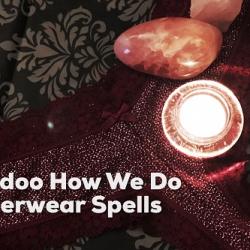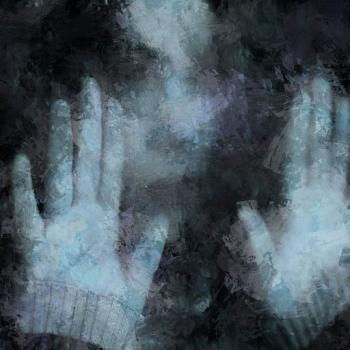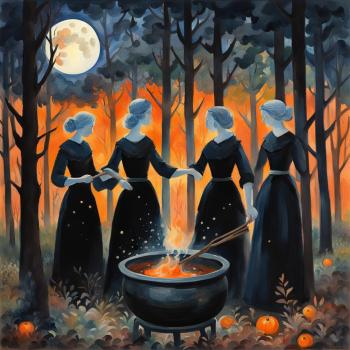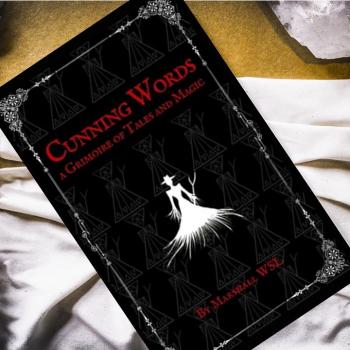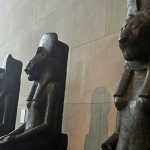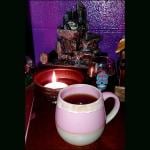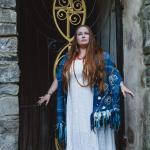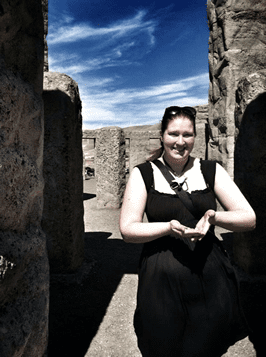
(used with permission)
In my family, the great outdoors is our church. I suppose that is animism in a nutshell. I was raised with new age ideas and practices so it wasn’t a shock to them I’m a witch. My mom just figured we’d always been weird and what’s more typical of weird people than a witch in the family? We went out camping to be closer to divine spirits sleeping under the night sky. This perspective on everything is as good a reason as any to call my column Star Made Witch.
There’s more to a person than can be said in a few lines, but the main thing to tell you about myself and my column is that I am a Traditional Witch. Traditional Witchcraft is a post modern term that indicates irreligious (indifferent to religion) counter-cultural and animist magical practices. In contrast, Wicca is generally understood to be a tradition of religious (organized set of worship practices and moral rules) pagan ritual magic. At this point, the differences between Initiatory Wicca and Traditional Witchcraft are probably negligible–most lineages are oathbound so we can’t say. However, it’s only fair to recognize they forged out on different paths.
As I am using them: Traditional Witchcraft and Wicca are post modern terms. Despite notable instances of people identifying themselves as witches prior to the 1950’s, it was illegal to do so. Witch was pretty much a incriminating slur. The term is reclaimed and casts a more holistic view on those it was thrown at in the past: cunning folk, certain kinds of heretics, and fairy doctors.
Even though Traditional Witchcraft is irreligious, it intersects with religions, even those that forbid it. People practice witchcraft usually not because of their religion, but despite it. It is vital to the understanding of Traditional Witchcraft to acknowledge that people do things against their religion while still being a member of that religion. They might do it because they want change or because that aspect of the religion isn’t serving them but others are. Perhaps they have no choice but to publicly subscribe to religion to fulfill social expectations while practicing their magical ways privately. The point being most of the figures now described as Traditional Witches were also members of the state religion and did not always identify as witches.
To date, the words taken alone– “traditional” and “witchcraft” have been attached to connotations of an ancient unbroken lineage of unchanged pagan belief and custom. While the forces Traditional Witches partner with or sometimes command may be ancient pagan survivals, few actually claim or expect their lines to be unchanged, unbroken nor ancient. These are World Religion values imposed onto alternative spiritualities because they are religions of the book which are validated by its age and assumed unchanged meaning of the word of their God(s). Traditional Witchcraft is mostly oral and experiential, but most witches did and do love magical books which may include the Bible. Traditional Witchcraft is constellations of living, creative and poetic magic mystery disciplines.
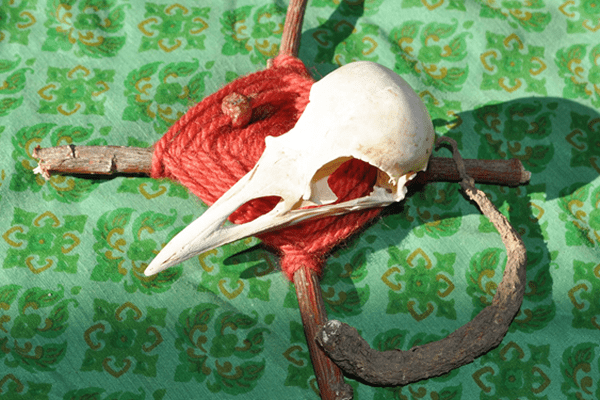
Clarifications aside, what do Traditional Witches do? Hallmarks of Traditional Witchcraft include association with familiar spirits, subverting oppressive regimes magically and traveling to or dealing with the otherworld intimately. Additionally, Traditional Witches do the same kinds of things pretty much any other kind of witch does: that is cast magic spells for personal or community improvement.
I know some people are uncomfortable with the resistance aspect, but during the medieval period, things we take as a given like: getting to have sex with your partner on your wedding night, bathing, taking care to heal illness, having pets and parties were at various times and places counter to the law and religious dogma. Many of the people tried as witches were accused of violating those religious expectations. I have no reason to think people then were much different from people now. There were rebels then just as there are rebels now who did/do naughty things like have sex in the woods, skinny dip, bite their thumbs at authority and did/do (or help friends) use herbs for healing, opening their minds, and to ease pain.
In every expression of Traditional Witchcraft I have seen there is some level of interaction with spirits, be it ancestors, fairies, personal gods, or animal spirits. Possibly the familiar spirits are the source of the witch’s powers. In some reports the relationships are romantic or sexual, in others they are more fraternal or civil. People house spirits in bottles, in idols, in tools or they visit them at set locations. Some come to them only in dreams and visions. Others sense their spirit(s) all the time.

These practices are very ecstatic. This involves a level of mysticism that is unpredictable because it is happening outside of rigid religious standards. Things can get wild. People fly their souls off to battle spiritual enemies, or to dance within a circle with a horned beast, or party with fairies. All of this rending of standard reality occurs with an otherworld consciousness. This is compared to some more transcendent traditions in which a higher level of knowledge is sought. Traditional witches are usually seeking knowledge through atavism. Atavism is experiences of wisdom through wildness and unlearning the illusions of societal structures and strictures.

Patheos Pagan on Facebook.
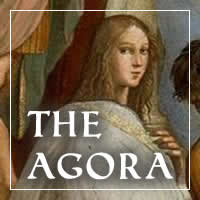
the Agora on Facebook
Star Made Witch is published bi-monthly on alternating Mondays here on the Agora. Subscribe via RSS or e-mail!
Please use the links to the right to keep on top of activities here on the Agora as well as across the entire Patheos Pagan channel.







